My initial plan was to show share this installation after my congregation had seen it for the first time. But the winter storms of the past two weekends (and one potential one this coming weekend) have had it another way. So very few of my congregants have seen this up close and in person. Many of them check out this blog, so this will be their introduction to this particular worship installation.
One of the gifts of Westfield is it’s beautiful, historic sanctuary. It’s a sanctuary that typically looks like this:
(Just place your cursor over the image, click and drag to the left of right)[panoembed pano=”3h7mZG” width=”500″ height=”250″]
It’s a beautiful, simple, elegant space. It’s white walls recall the simplicity of God’s grace. They’re also a theological statement from the time the building was built: The Word of God is enough–there’s no need for fancy art or stained glass or anything else that might distract from the Word.
While distractions are hardly helpful, I would argue that visual used creatively in worship help to enhance the overall experience.
And that, my dears, is where our fabric comes in. Old, stately churches like Westfield are blank canvases. And fabric is our paint.

I found this fabric at the $1.99 / yard store in Auburn, MA. One of my dear congregants, Betty, who saves the day in so many ways, offered to introduce me to this incredible shop. I’m sure you remember Betty. Here’s a picture of one of her more recent contributions:
She and I made our way to the store earlier this month to find the beautiful fabric in the picture above. It’s a deep, rich, shiny purple on one side and black on the other. It’s just beautiful. Which is good because after such a beautiful Christmas season, it became apparent that it would be a long, plain 11 months until the next season. I needed to find a way to visually engage worshipers in a new way. We needed something more than decoration. We needed something that led us deeper into a season. I find it helpful to take on projects like this during seasons–blocks of time with set beginnings and set ends. These built in parameters help congregations feel more at ease with additions to the worship space–they know it’s not permanent. Here’s what I came up with.
[panoembed pano=”9fYvEs” width=”500″ height=”250″]
This fabric installation serves several purposes. The first is that it clearly marks that we’ve entered a time where things are different. That is one reason for the church year, after all–it’s a way to delineate when things are different, that this time is set apart. Another goal is the create a different feeling in the space. The fabric creates a canopy that absolutely impacts the way the space feels when you walk in. Finally, the fabric is meant to engage worshipers in a visual way.
There are five swaths of fabric. After the first Sunday in Lent, one strip of fabric at a time, starting from the back of the sanctuary, will be flipped to it’s black side each week. It’ll be a subtle change that will begin to darken the space. For me, it signifies the gathering storm as we journey toward Holy Week and the cross.
My dear friend Sarah (who so graciously took these photos–thanks m’dear!) came over last Friday and helped me cut the fabric, drape it, and secure it. We started by measuring the fabric out using the tools we had–pews and hymnals!
Next, with Sarah on one side of the wrap around balcony and me on the other, we walked the fabric down and secured it with thumb tacks. Here we are both doing our part.
We installed the farthest to the back first, then the strip over the pulpit platform. Next, we split the difference and placed the middle one. Then we added the last two on either side of the center strip. In the picture below, I’m trying to determine if the fabric over the pulpit is too low. Don’t worry. It’s not.
One of the unintended but fortunate results of the installation is that the space feels as though it’s shrunk. What was a huge, airy, space-filled sanctuary now feels smaller, tighter. In my mind, this echoes the Lenten call of self-displine. We enter the season of Lent partly in an effort to bring ourselves back down to size. We acknowledge the places where we have become proud, boastful, haughty even, and we work to humble ourselves. It’s remarkable (and hard to explain) how I feel when I walk into this room now, almost like our brokenness hangs above us. Yet, it also means that come Easter Sunday, when this fabric is removed and replaced with what promise to be stunning rays of peach and coral colored fabric, we will be reminded that our hope lies in the Resurrection. The room will be filled with light, airy once more–“the stone has been rolled away!” my worship chair remarked when I told her about the plan.
Amazing what you can get from fabric, eh?
One last look. From above:
From below:
What creative ways have you used fabric in your worship space? Any inspired ideas?
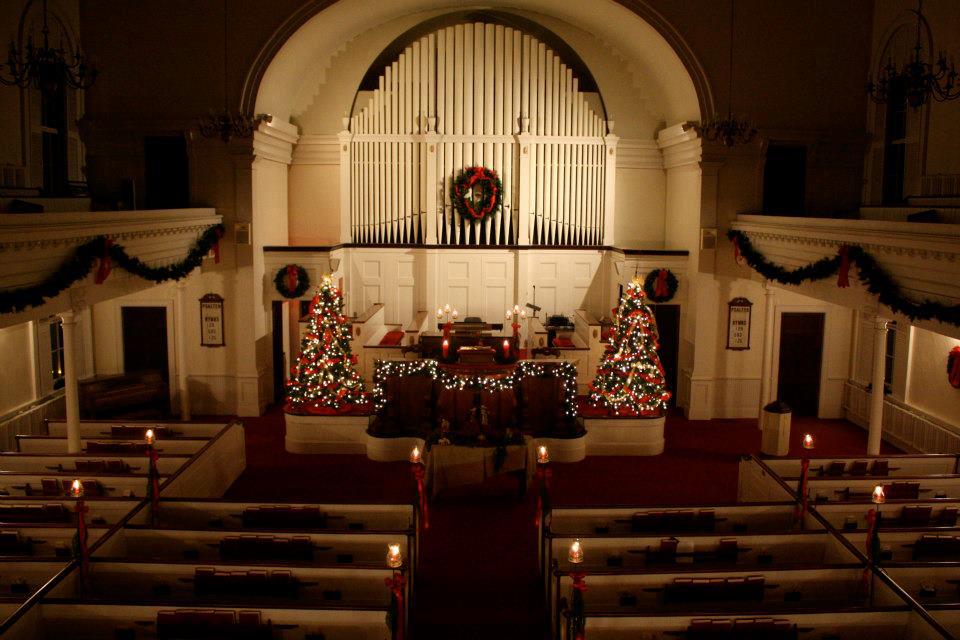


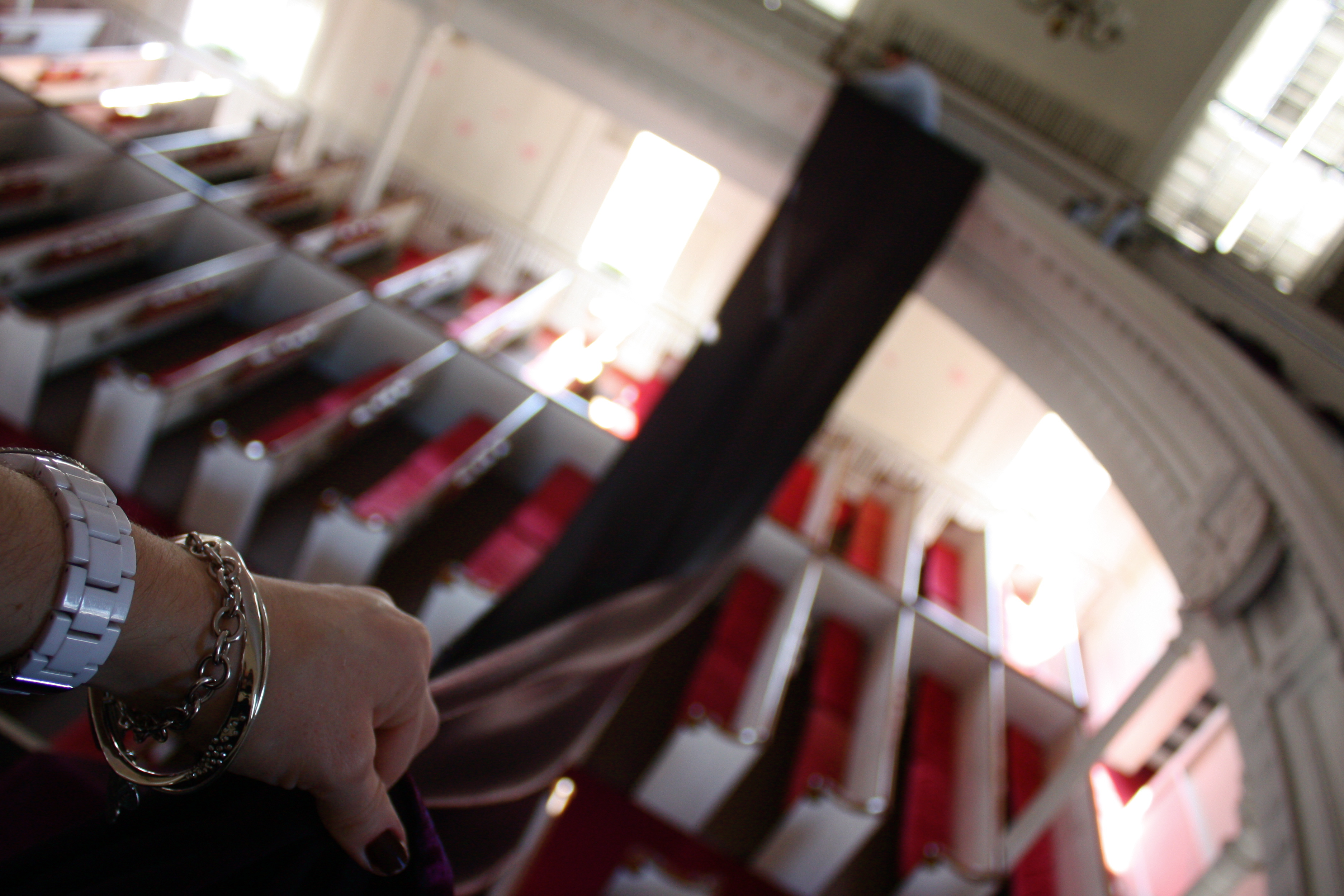
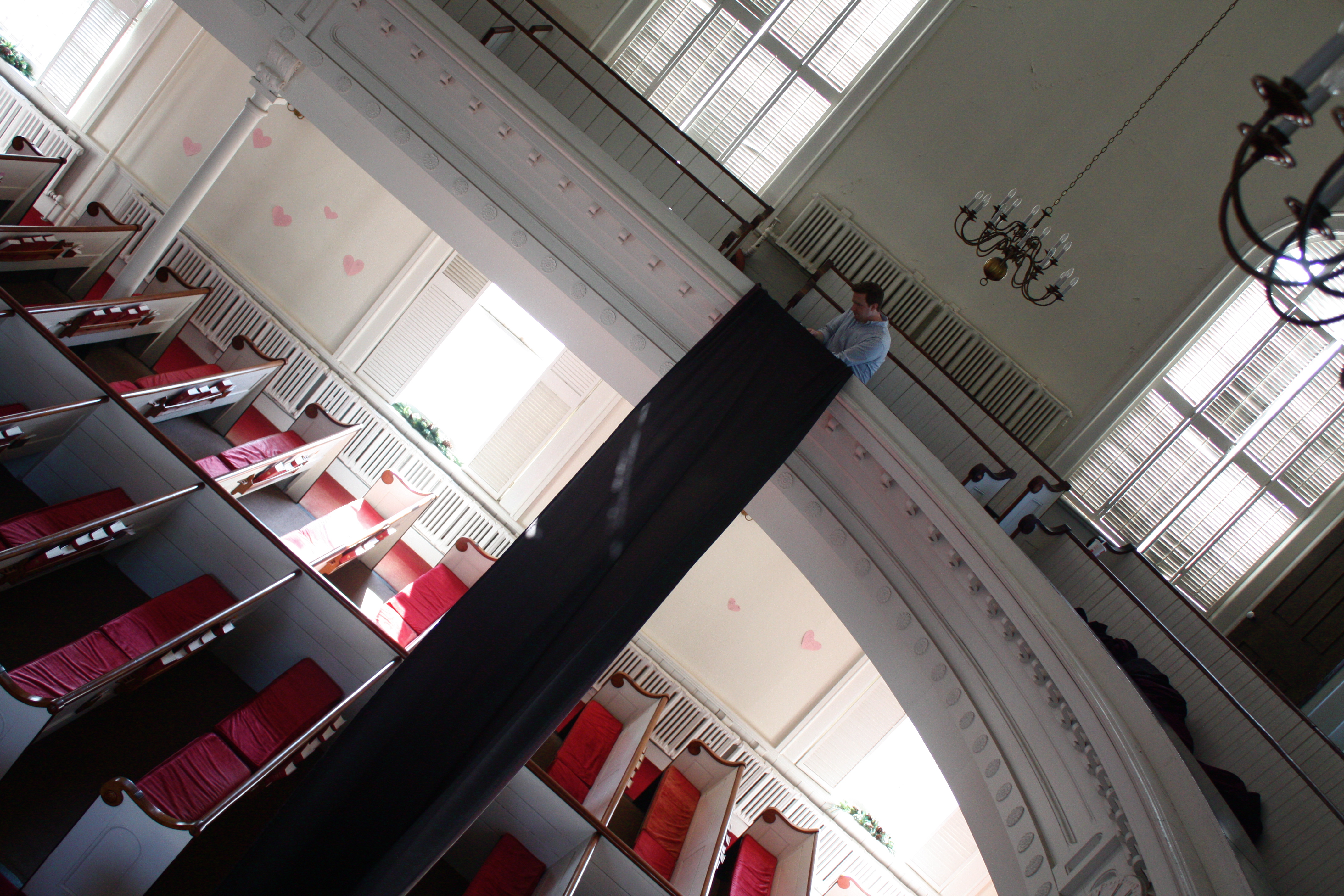
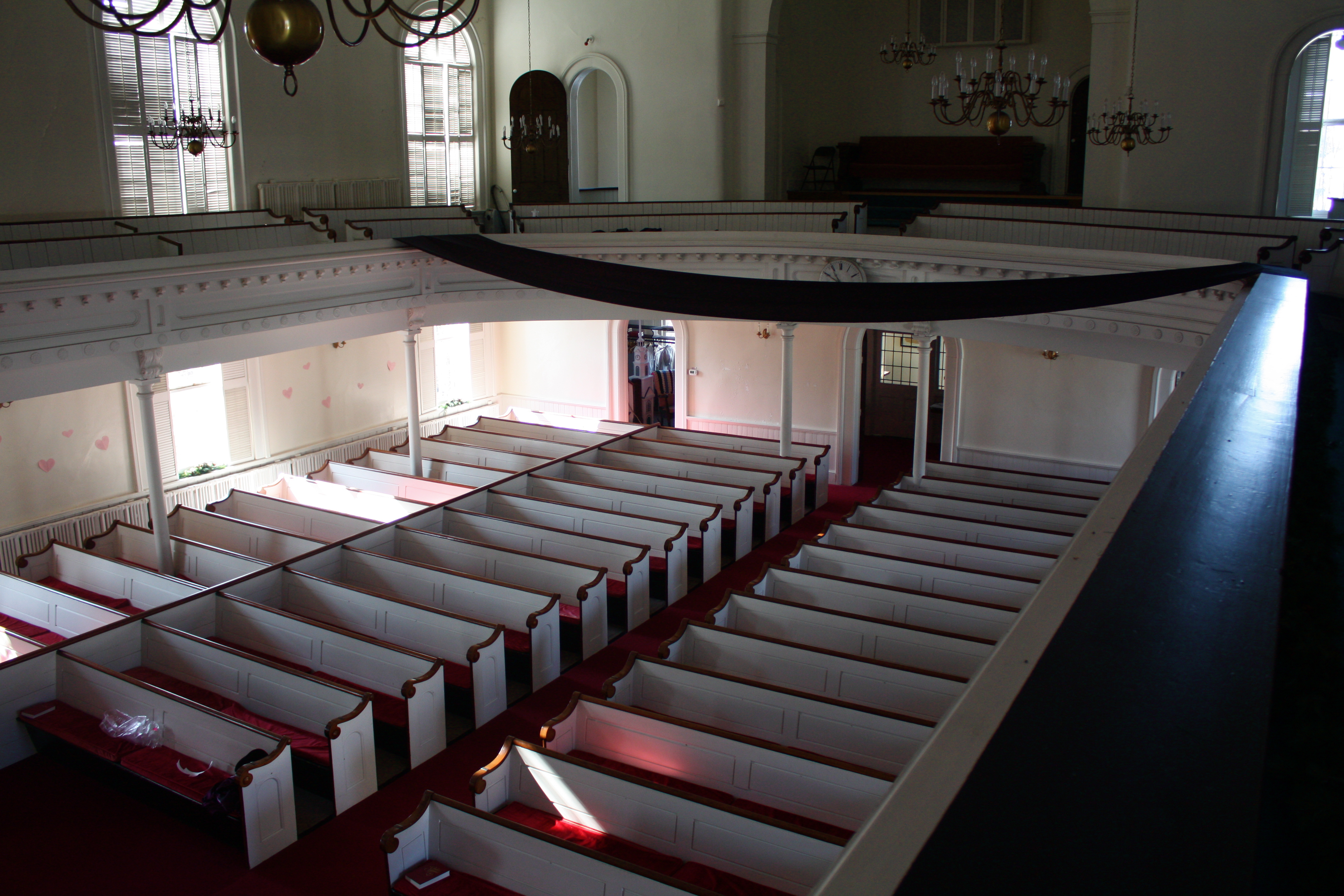
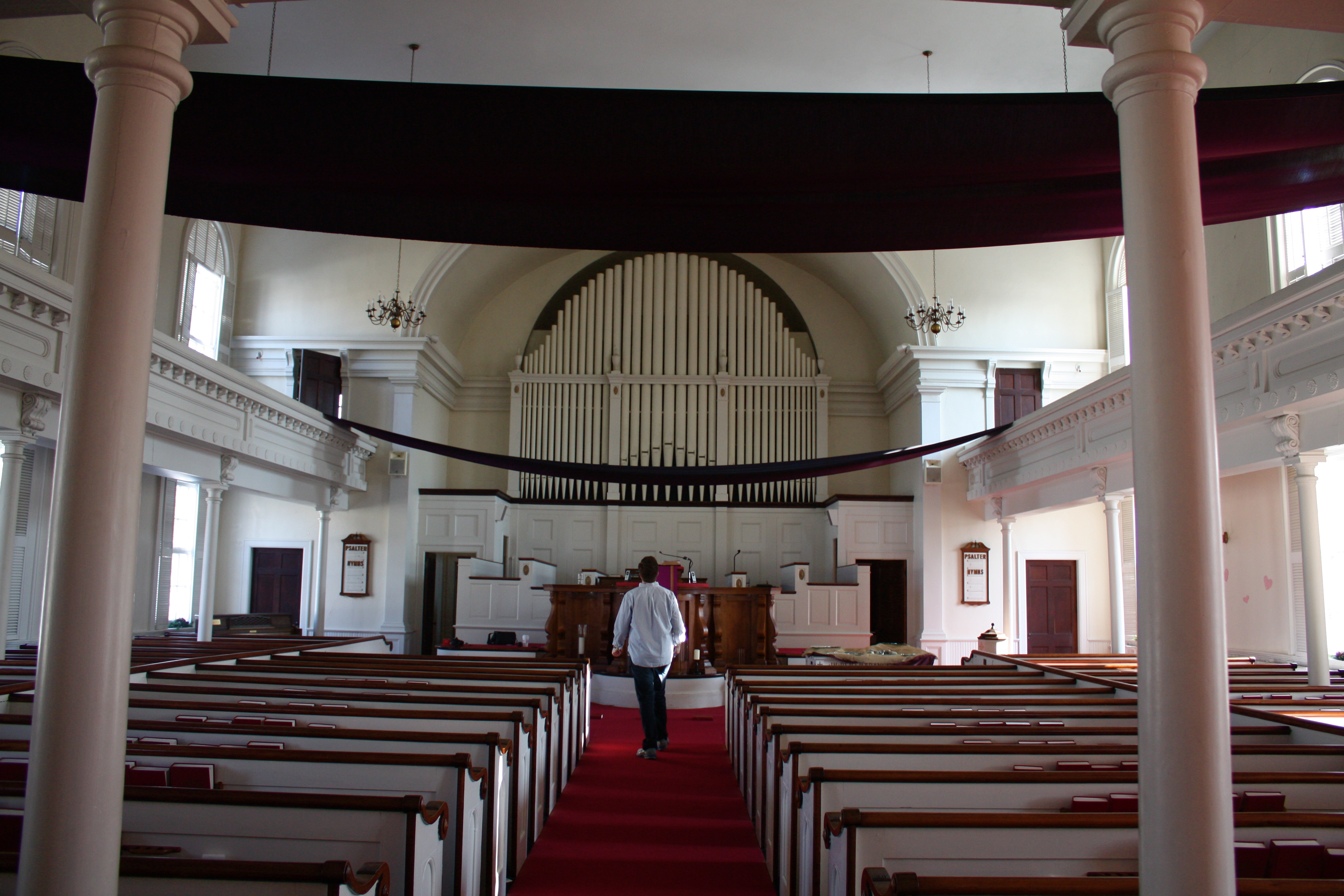
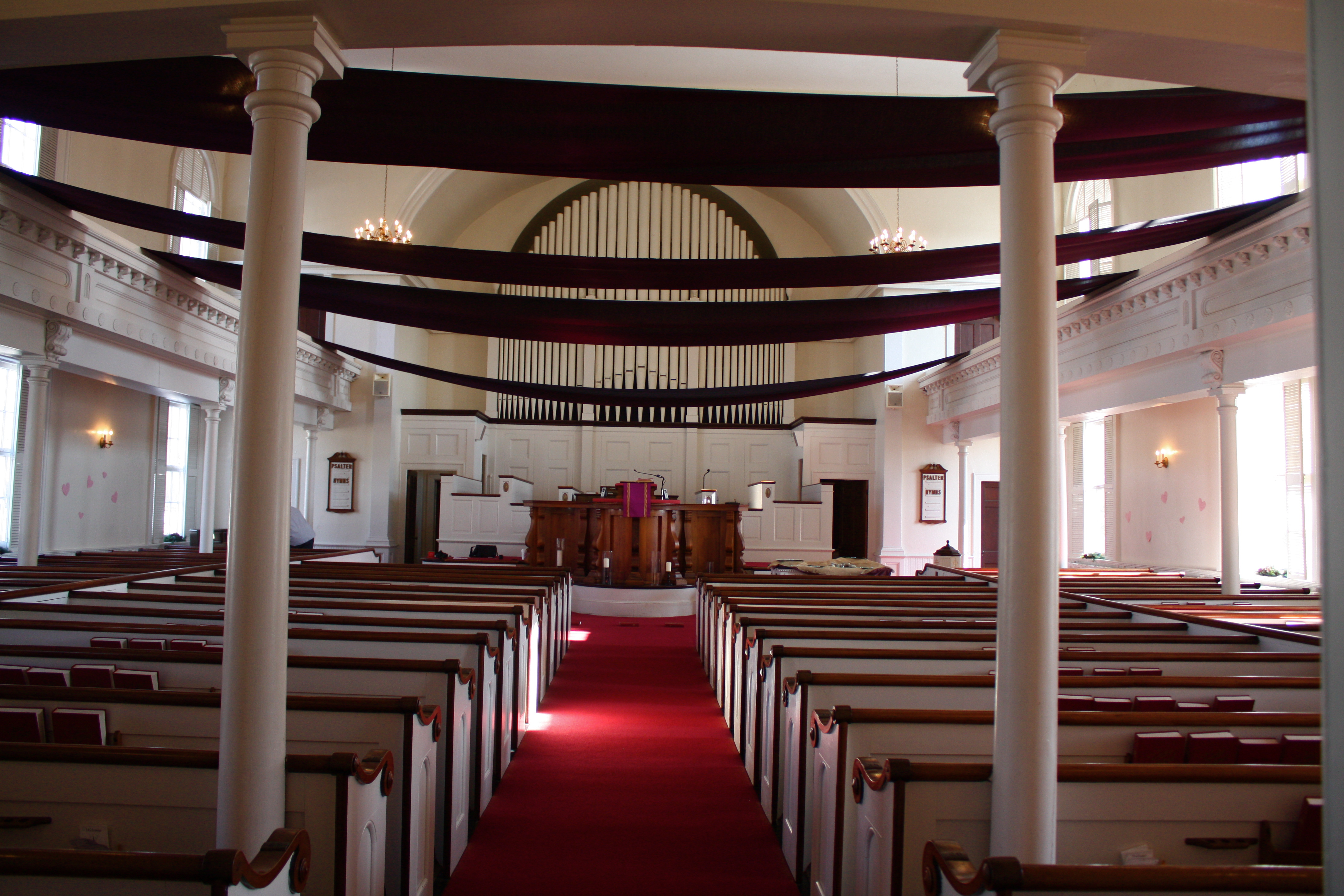

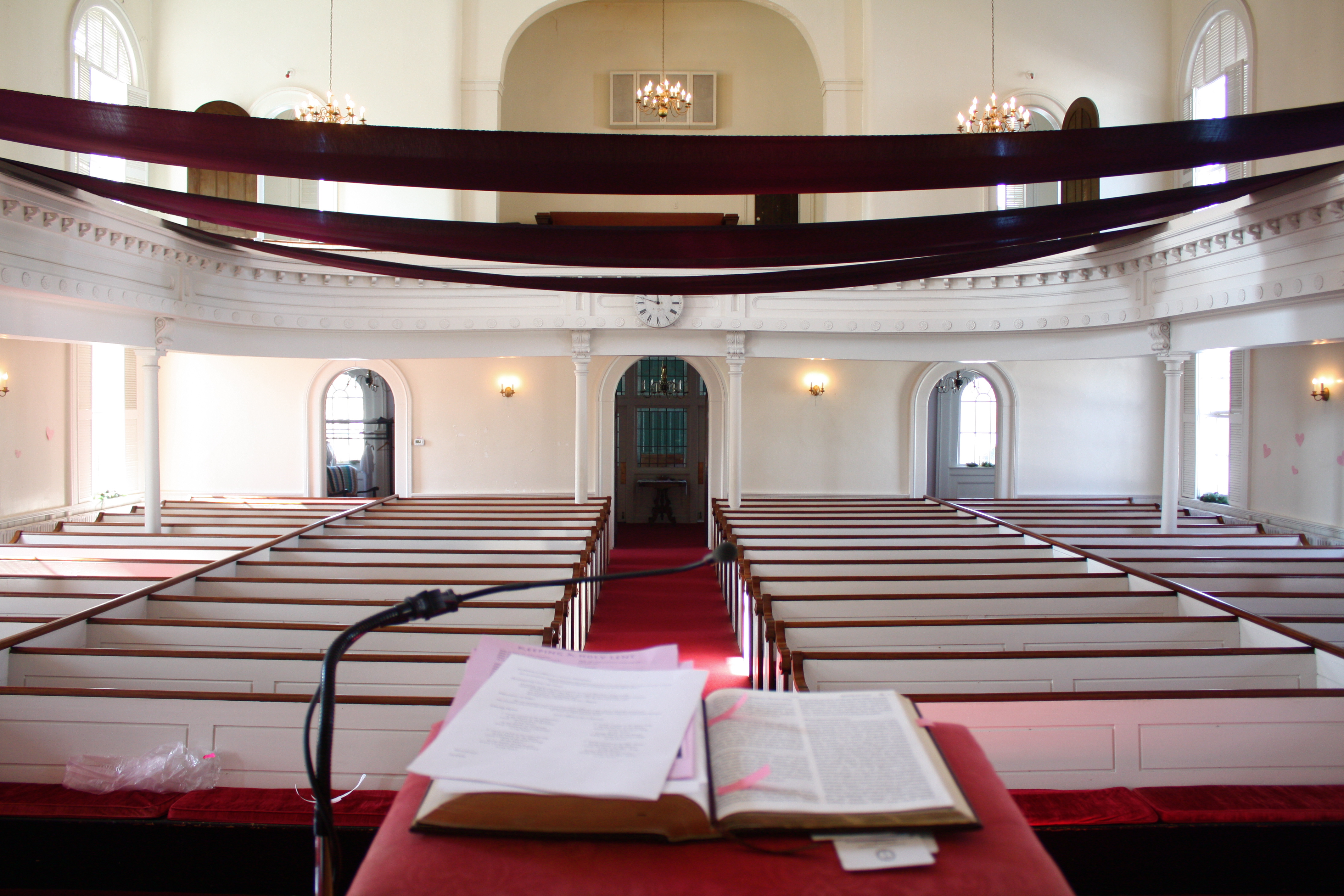

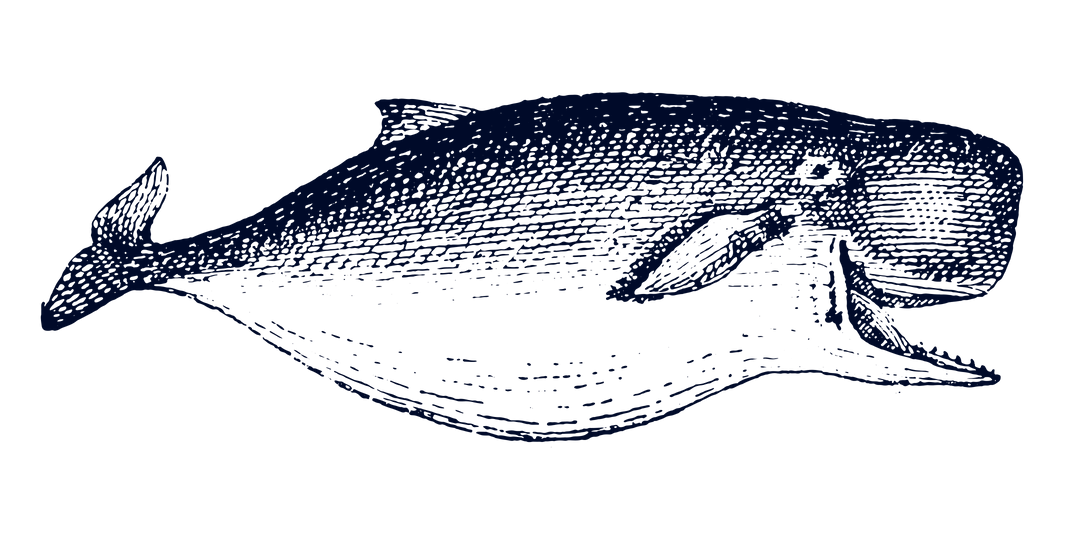

Jon, I have a roll of many yards of a light peach colored fabric which is see-through. It’s wide – my guess is 60″ If you would like for me to send a sample sent an address.
Dottie
Thanks,Jon,forthisrecognitionofthemovementsofLent
Canyoutellthatthespacebarisnotworking?
SomedaywewillvisityouinCT!
BlessingsAlways!
Richard